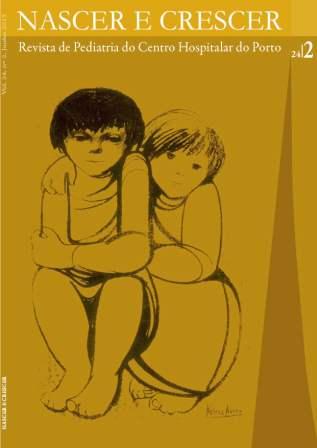Hair removal in adolescence
DOI:
https://doi.org/10.25753/BirthGrowthMJ.v24.i2.8562Keywords:
adolescent, depilation, epilation, hair removalAbstract
Introduction: Due to hormonal stimulation during puberty, changes occur in hair type and distribution. In both sexes, body and facial unwanted hair may have a negative psychological impact on the teenager. There are several available methods of hair removal, but the choice of the most suitable one for each individual can raise doubts.
Objective: To review the main methods of hair removal and clarify their indications, advantages and disadvantages.
Development: There are several removal methods currently available. Shaving and depilation with chemicals products are temporary methods, that need frequent repetition, because hair removal is next to the cutaneous surface. The epilating methods in which there is full hair extraction include: epilation with wax, thread, tweezers, epilating machines, laser, intense pulsed light, and electrolysis.
Conclusions: The age of beginning hair removal and the method choice must be individualized and take into consideration the skin and hair type, location, dermatological and endocrine problems, removal frequency, cost and personal preferences.
Downloads
References
Del Ciampo LA, Del Ciampo RL. Adolescência e imagem corporal. Adolesc. Saude, Rio de Janeiro 2010; 7(4):55-9.
Borges A, Matos MG, Diniz JA. Body Image and Subjective Well-Being in Portuguese adolescents. Span J Psychol 2013; 16:1-12.
Morelli JG. Morphology of the skin. In: Kliegman RM, Stanton BMD, Geme JS, Schor N, Behrman RE. Nelson Textbook of Pediatrics. 19th Edition. Elsevier, 2011.
Blume-Peytav U. An overview of unwanted female hair. Br J Dermatol 2011; 165 (Suppl. 3):19–23.
De Maria AL, Berenson AB. Prevalence and correlates of pubic hair grooming among low- income Hispanic, Black, and White women. Body Image 2013; 10(2): 226-31.
Ramos-E-Silva M, Castro MCR, Carneiro LV. Hair removal. Clin Dermatol 2001; 19: 437-44.
Wanitpakdeedechar R, Alster T. Physical means of treating unwanted hair. Dermatol Ther 2008; 21: 392-401
Shenenberger DW. Removal of unwanted hair. 2013. Disponível em: http://www.uptodate.com/contents/ removal-of-unwanted-hair.
Olsen EA. Methods of hair removal. J Am Acad Dermatol 1999; 40 (2): 143-55.
Alonso L, Fuchs E. The hair cycle. J Cell Sci 2006; 119 (3): 391-3.
Mandt N, Troilius A, Drosnerz M. Epilation Today: Physiology of the Hair Follicle and Clinical Photo-Epilation. J Investig Dermatol Symp Proc 2005; 10:271-4.
Shenenberger DW, Utecht LM. Removal of unwanted facial hair. Am Fam Physician 2002; 66 (15): 1907-11.
Shapiro J, Lui H. Treatments for unwanted facial hair. Skin therapy let 2005; 10(10):1-4.
Blume-Peytavi U, Gieler U, Hoffmann R, Lavery S, Shapiro J. Unwanted Facial Hair: Affects, Effects and Solutions. Dermatology 2007; 215:139-46.
Lapidoth M, Dierickx C, Lanigan S, Paasch U, Campo-Voegeli A, Dahan S et al. Best Practice Options for Hair Removal in Patients with Unwanted Facial Hair Using Combination Therapy with Laser: Guidelines Drawn up by an Expert Working Group. Dermatology 2010; 221: 34-42.
Gan SD, Graber EM. Laser Hair Removal: A Review. Dermatol Surg 2013; 39: 823-38.
Halachmi S, Lapidoth M. Low-fluence vs. standard fluence hair removal: A contralateral control non-inferiority study. J Cosmetic Laser Ther, 2012; 14: 2-6.
Alai NN, Saemi A, Ang JM. Laser assisted hair removal. 2013. Disponível em: http://emedicine.medscape.com/ article/1831567.
Rao K, Sankar TK. Long-pulsed Nd:YAG laser-assisted hair removal in Fitzpatrick skin types IV–VI. Lasers Med Sci 2011; 26:623-6.
Downloads
Published
How to Cite
Issue
Section
License
Copyright and Authors' Rights
All articles published in Nascer e Crescer - Birth and Growth Medical Journal are Open Access and comply with the requirements of funding agencies or academic institutions. For use by third parties, Nascer e Crescer - Birth and Growth Medical Journal adheres to the terms of the Creative Commons License "Attribution - Non-Commercial Use (CC-BY-NC)".
It is the author's responsibility to obtain permission to reproduce figures, tables, etc. from other publications.
Authors must submit a Conflict of Interest statement and an Authorship Form with the submission of the article. An e-mail will be sent to the corresponding author confirming receipt of the manuscript.
Authors are permitted to make their articles available in repositories at their home institutions, provided that they always indicate where the articles were published and adhere to the terms of the Creative Commons license.


